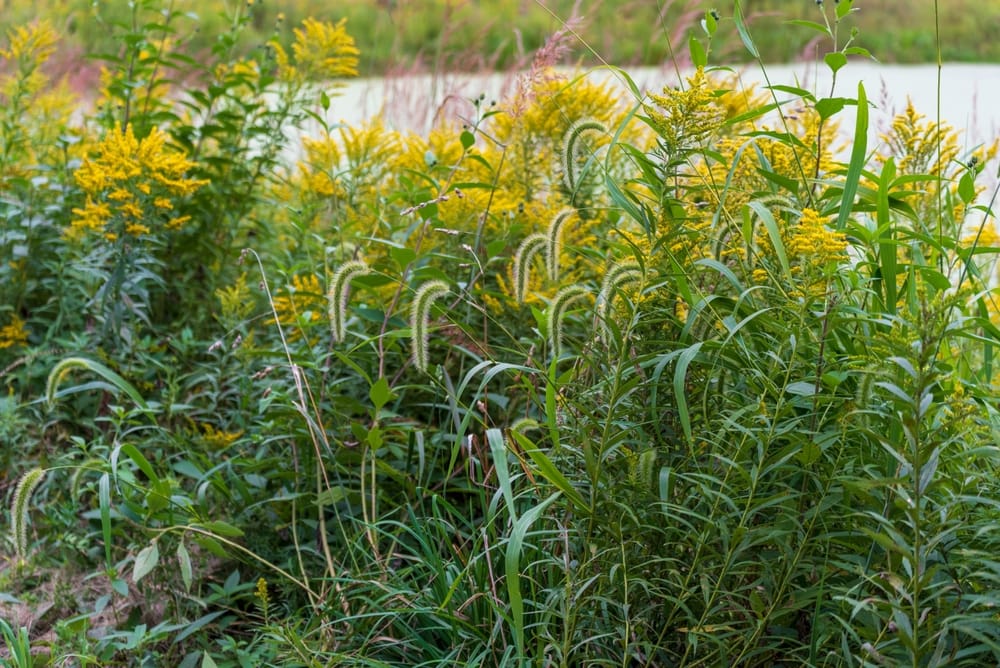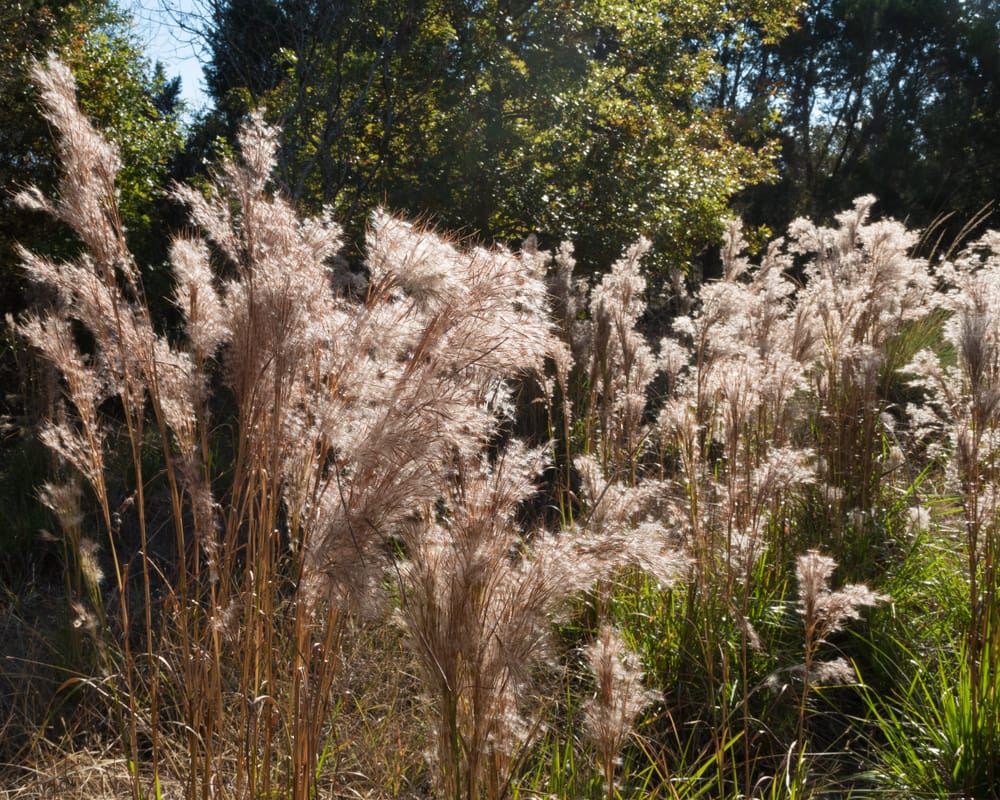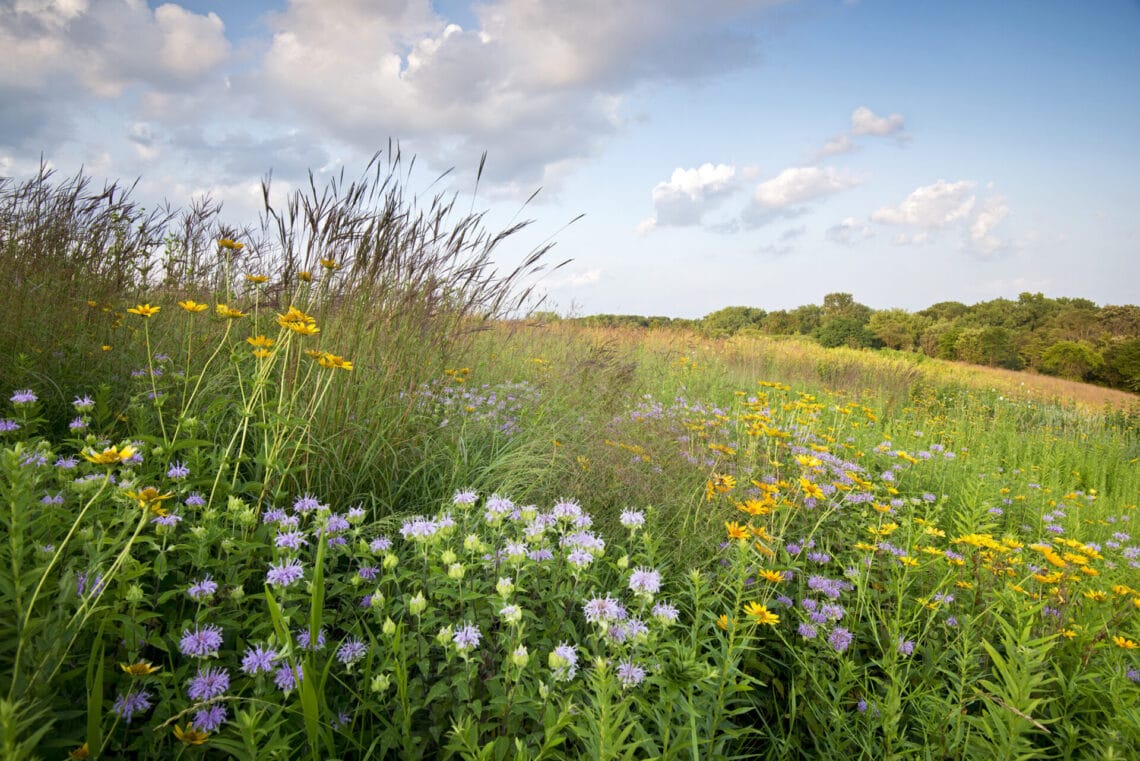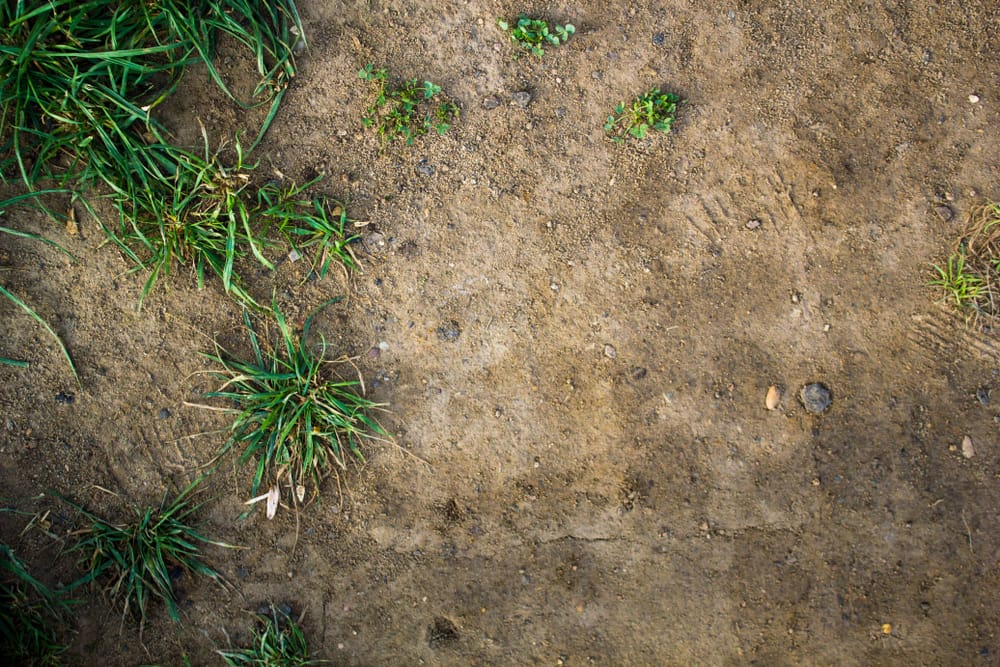Don’t expect your prairie to look great after the first year. During this time, native seedlings put most of their energy into root development, and will most likely not grow more than an inch or two above ground. The site will need to be mowed two to four times to prevent fast-growing weeds from dropping seed and shading out the native seedlings. Vegetation should be mowed to a height of 4-6 inches whenever it reaches a height of 10-12 inches until the end of September. Abstain from hand pulling in the first year. This may potentially pull out native seedlings and bring new weed seeds to the soil surface.
 In the second year, the planting should be dominated by Canada Wild Rye and early emerging wildflowers like Black-eyed Susan, Wild Bergamot, and Yellow Coneflower. If weeds begin to grow, mow them once to a height of 6-8 inches early in the spring. Make sure to time your mowing before weeds begin to flower. Common weeds like Curly Dock, Burdock, Canada Thistle, Wild Parsnip, or Sweet Clover can also be eliminated by spot spraying with glyphosate or hand pulling.
In the second year, the planting should be dominated by Canada Wild Rye and early emerging wildflowers like Black-eyed Susan, Wild Bergamot, and Yellow Coneflower. If weeds begin to grow, mow them once to a height of 6-8 inches early in the spring. Make sure to time your mowing before weeds begin to flower. Common weeds like Curly Dock, Burdock, Canada Thistle, Wild Parsnip, or Sweet Clover can also be eliminated by spot spraying with glyphosate or hand pulling.
 If there is enough fuel to carry a fire, plan on a prescribed burn in March or April of the third year. This will stimulate growth of new wildflowers as well as warm season grasses like Big Bluestem, Indiangrass, Switchgrass, and Sideoats. These species should take the place of most of the early emerging species from the previous years. Always use extreme caution when burning. Prairie fires burn very quickly and can get out of control in no time. As a safety precaution, plan on creating a firebreak around the perimeter of your prairie prior to burning. Either mow a 10-15 foot path around the perimeter of the burn site or use existing natural features such as roads, rivers, or agricultural fields. If you are not experienced, please don’t try to conduct a prescribed burn on your own. There are several organizations and companies, including EC3’s burn crew, that can provide the personnel and equipment to make sure your burn is done safely.
If there is enough fuel to carry a fire, plan on a prescribed burn in March or April of the third year. This will stimulate growth of new wildflowers as well as warm season grasses like Big Bluestem, Indiangrass, Switchgrass, and Sideoats. These species should take the place of most of the early emerging species from the previous years. Always use extreme caution when burning. Prairie fires burn very quickly and can get out of control in no time. As a safety precaution, plan on creating a firebreak around the perimeter of your prairie prior to burning. Either mow a 10-15 foot path around the perimeter of the burn site or use existing natural features such as roads, rivers, or agricultural fields. If you are not experienced, please don’t try to conduct a prescribed burn on your own. There are several organizations and companies, including EC3’s burn crew, that can provide the personnel and equipment to make sure your burn is done safely.
If burning is not an option, plan on mowing to a height of 6 inches and removing the thatch in early spring. If not removed, the thatch layer can cause poor plant growth or even cause plants to completely die out.
 New species will continue to appear over the next several years. Some species could even take as long as ten years to emerge. Continue to burn every 2-3 years. It may be beneficial to implement a burn rotation in which only one section of the prairie is burned at a time. This will provide steady habitat for early nesting birds as well as protection for over-wintering butterflies. If you wish to add diversity, wildflowers can be interseeded in the late fall. Continue to spot spray or hand pull weeds if they are still a problem. As your prairie continues to mature, the weed population should dissipate.
New species will continue to appear over the next several years. Some species could even take as long as ten years to emerge. Continue to burn every 2-3 years. It may be beneficial to implement a burn rotation in which only one section of the prairie is burned at a time. This will provide steady habitat for early nesting birds as well as protection for over-wintering butterflies. If you wish to add diversity, wildflowers can be interseeded in the late fall. Continue to spot spray or hand pull weeds if they are still a problem. As your prairie continues to mature, the weed population should dissipate.

